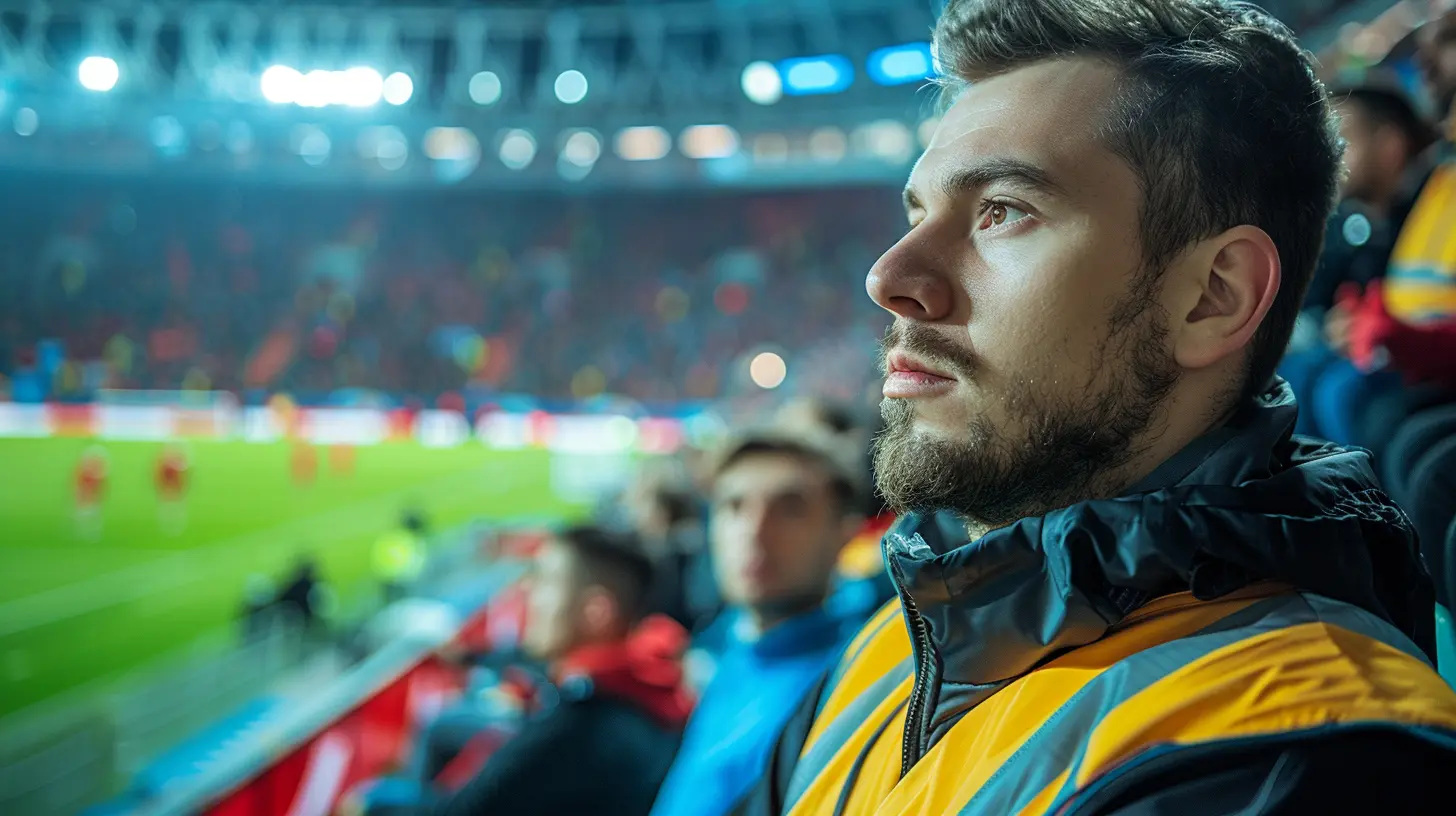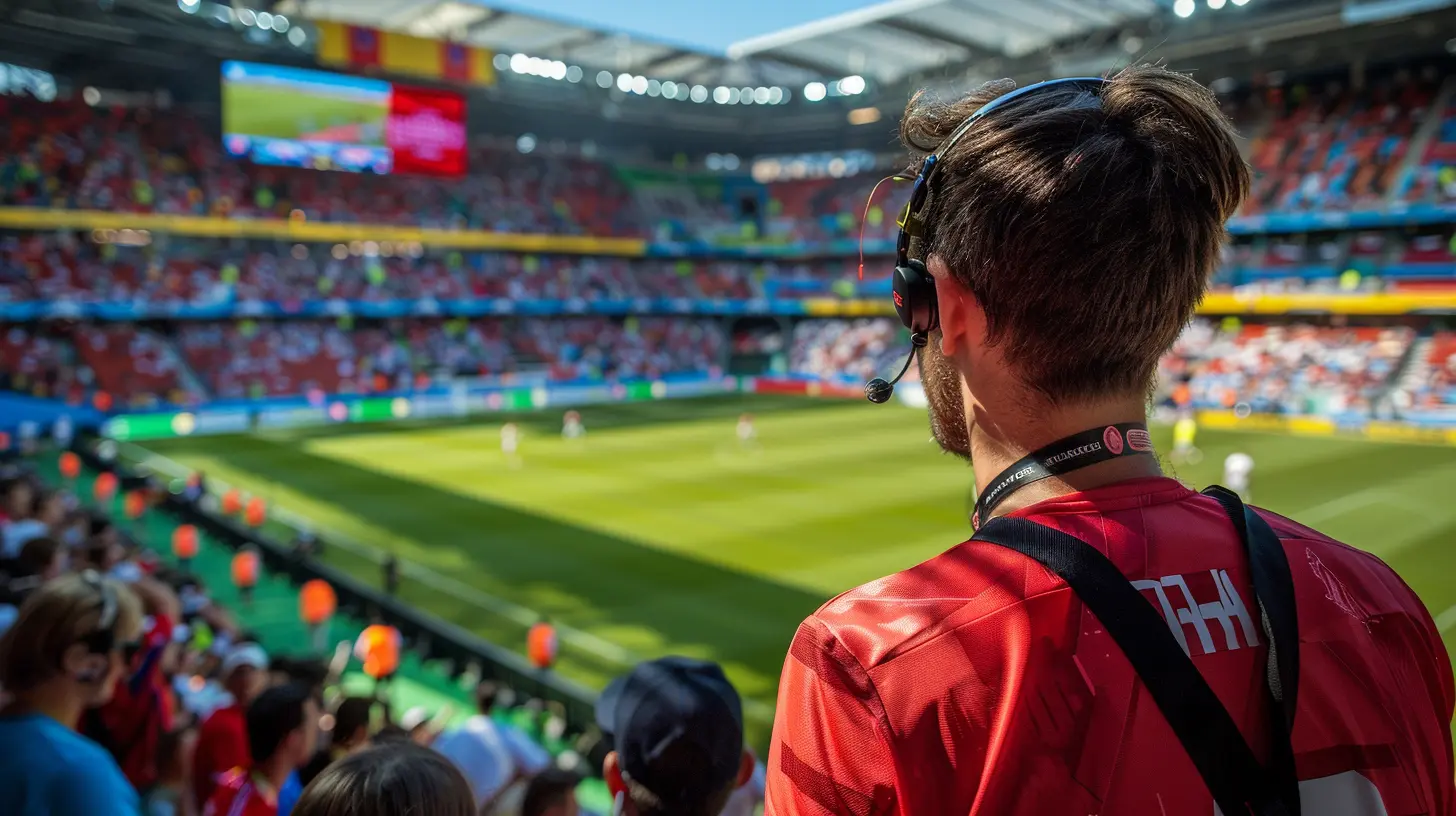The Future of VAR: How New Guidelines Are Shaping Decisions
5 November 2025
Let’s be honest—if you’re a fan of football (or soccer, depending on where you kick your ball), you’ve had strong feelings about VAR. Whether it’s that sweet moment when it confirms your team’s goal or the heartbreak of watching it get ruled out by a toe being offside, VAR (Video Assistant Referee) has become the football equivalent of that friend who always insists on replaying a party foul on video—just to prove a point. Love it or hate it, it’s here to stay.
But here’s the kicker: VAR isn’t done evolving.
With a fresh batch of guidelines and tweaks being introduced, the future of VAR looks a lot different—and, dare we say, brighter—than when it first came onto the pitch. So buckle up, because we’re diving into how these new rules are reshaping the way decisions are made and what this could mean for the beautiful game.
What Is VAR, Really?
Before we rush into the future, let’s rewind a bit. VAR was introduced to help referees make more accurate decisions by reviewing footage in key situations. Sounds good in theory, right?It’s mainly used for:
- Goals and the buildup to them
- Penalties (or lack thereof)
- Red cards
- Mistaken identity (yep, it happens more often than you think)
It all seemed pretty straightforward at first. But with blurry offsides, “clear and obvious errors,” and endless replays, things got a little murky over time.
So, What’s The Problem With VAR (So Far)?
VAR was supposed to eliminate controversy. Ironically, it's created a bunch of its own. Fans, players, and even pundits have complained about:- Delays that break the game’s flow
- Lack of transparency (Why did they change that call? What did the VAR see?)
- Inconsistent decisions across matches or even within the same game
- Overly technical interpretations (like a shoelace being offside—seriously?)
It’s like trying to clean your glasses and somehow making them even smudgier.
The Winds of Change: What’s New With VAR?
The good news? Football’s governing bodies have heard the complaints. New guidelines and technological improvements are being rolled out to make VAR more efficient, understandable, and—most importantly—fair.Let’s break them down.
1. Semi-Automated Offside Technology (SAOT)
Remember those freeze-frames of strikers caught offside by a pixel? Say goodbye to that drama.With SAOT, VAR can now determine offsides quicker and with more accuracy using advanced tracking and AI-powered models. This tech uses multiple cameras to map player positions in real time, even calculating body parts involved in the offside decision.
The result? Decisions in less than 25 seconds, and ultra-precise virtual lines that leave no room for debate.
It’s like going from dial-up to high-speed internet—way smoother and way faster.
2. Clearer Communication With Fans
One of the biggest criticisms of VAR is the mystery surrounding decisions. Why did the referee change their mind? What did they see?Well, just like in rugby or American football, some leagues and competitions have started allowing referees to explain VAR decisions over the stadium PA system.
This simple change adds a whole new level of transparency. Fans in the stadium and viewers at home finally get to hear the reasoning behind a controversial overturn. It’s not perfect—but it’s a step in the right direction.
We’ve gone from watching a silent movie to at least getting the commentary.
3. Tweaks to the “Clear and Obvious” Rule
Ah yes, the infamous “clear and obvious” standard. It’s supposed to be the guiding principle of when VAR intervenes. But boy, has that been up for interpretation.Now, there are more defined interpretations of what counts as a clear and obvious error. VAR is being told to focus on game-changing mistakes, not micromanage every foul or handball.
Fewer interventions = better flow. Think of it like a good referee who lets the game breathe instead of blowing the whistle every 30 seconds.
4. Time Limits on VAR Decisions
Nobody enjoys a five-minute wait just to see a goal stand—or worse, get canceled. That’s why FIFA and other bodies are encouraging time-boxed reviews.If a decision can’t be made within a set timeframe (e.g., 60 or 90 seconds), the original on-field decision stays. Why? Because if it takes that long to be sure, it probably isn’t “clear and obvious” anyway.
It’s like flipping a coin—if you’re still unsure after a minute, maybe you’re overthinking it.
5. More Focus on Referee Accountability
There’s a growing push to train and develop VAR-specific referees, rather than pulling in match officials who already have their hands full on the pitch.Think of it like having a goalie who also wants to play striker—not the best idea. Specialized VAR officials are being trained to work the tech, understand the nuances, and apply the guidelines consistently across games.
Better officials = better decisions. Simple math.
How These Changes Are Shaping the Game
Alright, enough with the tech talk. Let’s talk real-life impact.✅ Matches Are Flowing Better
With fewer unnecessary interruptions, fans are getting back the rhythm of the game. That “start and stop” feel is slowly disappearing, and we’re seeing more fluid football.✅ Fans Feel Less Frustrated
Clear communication and faster decisions mean fewer fans are left scratching their heads (or tossing their TV remotes).✅ Referees Are Under Less Pressure
With support from better VAR systems and specialized colleagues, refs can focus on managing the game rather than being the villain of the week online.✅ Players Are Adapting Their Behavior
Believe it or not, players are starting to adjust how they react on the pitch, knowing that VAR will catch simulation or sneaky fouls. It’s like having a CCTV camera right above your desk at work—suddenly you stop slacking off.What's Next for VAR?
We’re still just scratching the surface. The future of VAR could get even more exciting (or terrifying, depending on how you feel about robots):🧠 AI-Driven Decision Making
Imagine VAR systems that learn from past decisions, predict outcomes, and even suggest calls to referees before they occur. The AI revolution is coming, and football won’t be left behind.🏟 Real-Time Fan Interaction
Some leagues are experimenting with interactive fan experiences, where you can see the VAR footage and decision process in real time via apps or AR overlays in stadiums.🌍 Global Consistency
One key challenge is making VAR consistent globally. Different leagues have different interpretations and technology levels. FIFA is working hard to align the standards, so a VAR decision in the Premier League matches one in the Champions League or World Cup.The Human Element: Can VAR and Emotion Coexist?
Let’s not pretend VAR will ever be perfect. Football is emotional, chaotic, and gloriously unpredictable. That’s why we love it. There’s something raw about a last-minute winner or a controversial red card that sparks debates in pubs and on Twitter for days.The trick here isn't to make VAR robotic—but to find that sweet spot between tech and tradition.
VAR isn’t replacing the beautiful game—it’s just giving it a clearer lens to be seen through.
And if done right, it won’t kill the drama. It’ll just help make sure the drama is based on great football—not refereeing blunders.
Final Whistle
So where are we heading? In short: a smarter, faster, and more transparent version of VAR. These changes won't silence all the critics (this is football, after all), but they're definitely steps in the right direction.We’re not just watching football anymore—we're stepping into a new era where tech and tradition are learning to play on the same team.
And who knows? In a few years, we might look back and wonder how we ever questioned VAR in the first place.
Until then, let’s just enjoy the journey and keep yelling at our screens—because some things will never change.
all images in this post were generated using AI tools
Category:
New RulesAuthor:

Preston Wilkins
Discussion
rate this article
1 comments
Liora Price
Great insights on VAR's evolving landscape! It's exciting to see how these new guidelines can enhance the game. Here's to clearer decisions and more memorable moments on the pitch! Keep up the great work!
November 7, 2025 at 1:55 PM

Preston Wilkins
Thank you for your thoughtful comment! I'm glad you found the insights valuable. Here's to a more exciting future for VAR and the game!


